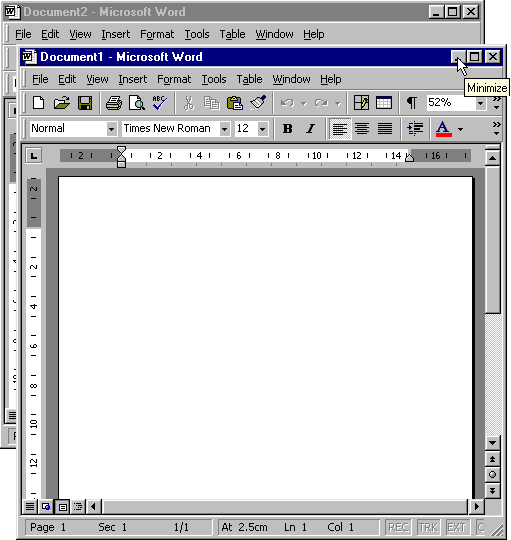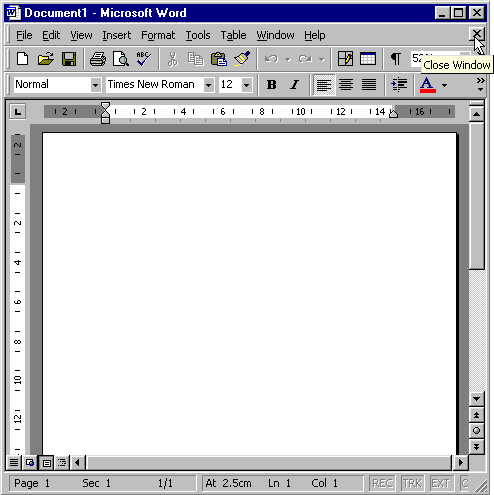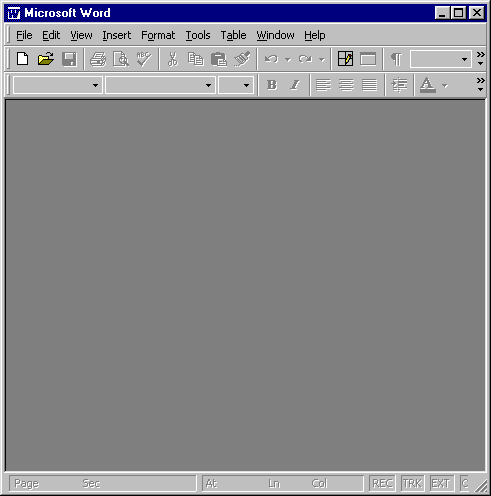When I open a Word 2000 (or higher) document, it creates a new instance of Word. How can I stop it from doing this?
Article contributed by Dave Rado
Actually it doesn't create a new instance of Word, but in Word 2000, it does appear to!
You get an icon on your taskbar for each open Word document, and if you tile your documents (in order to drag and drop between them, for instance), each document has its own toolbar(s), menu and statusbar, so you can end up not being able to see your text at all, for the clutter of the toolbars.
This feature is called SDI (which stands for Single Document Interface (it does not stand for So Damned Irritating) – i.e. a single document behaves as if it were an instance of the application; as opposed to MDI (Multiple Document Interface) which most applications use.
In addition, because individual Word documents are “pretending to be” the entire Word application:
- If you have more than one document open in Word 2000, the application title bar has a Close, Minimise and Restore button (which actually operate on the document, and not on the application!) – but the document doesn't.

- If you have only one document open in Word 2000, the document has a Close Window button (but not a minimise or restore button), and the application title bar has a Close, Minimise and Restore button.

- If you have no documents open, the application title bar has a Close, Minimise and Restore button (and there is no document, so no document Close button).

In Excel and PowerPoint 2000, you can toggle this feature on and off by selecting Tools + Options + View, and selecting or de-selecting the “Windows in Taskbar” option; and the option is switched off by default.
Word 2002 has a similar ability to switch between SDI and MDI.
One of the problems with Word 2000's implementation of SDI is that by default, there is no quick way to close Word, because both the File + Exit menu button, and the Alt+F4 shortcut, have been assigned to the FileCloseOrExit command, instead of being assigned to the FileExit command. As a result, they both close one document at a time, and don't let you quit Word until there is only one open document remaining. Fortunately, this is easy to fix, even if you don't want to use Romke Soldaat's Add-in. Reassign the Alt+F4 shortcut to the FileExit command; and also drag the Exit command (Tools + Customise + Commands + All Commands) onto your File menu, replacing the existing Exit button with your one. See also: How to assign a Word command or macro to a hot-key, and How to assign a Word command or macro to a toolbar or menu.
